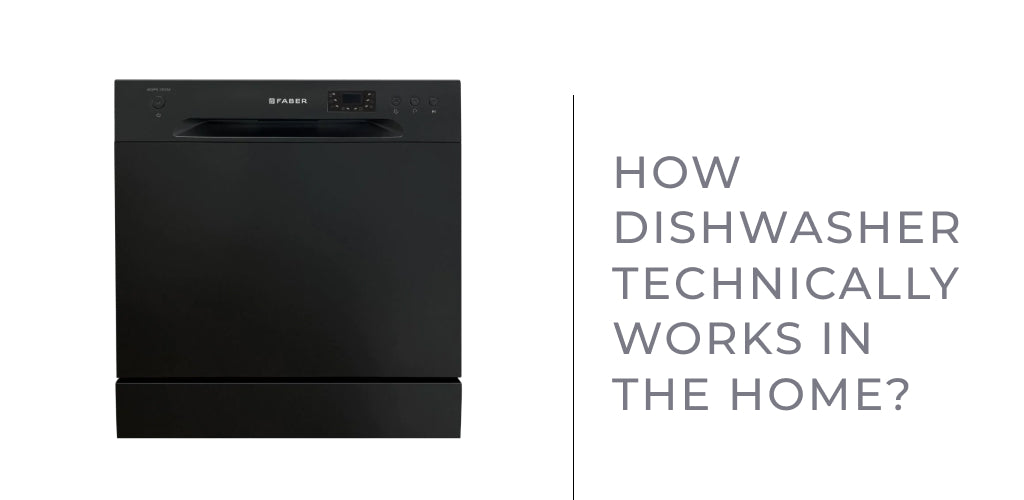How Dishwasher Technically works in the Home?

During a wash cycle, the pump in your dishwasher will propel water into the water jets. To eliminate food particles off plates, multiple spray arms will revolve and shoot water throughout the tub.
Particles are trapped in a filter while the meal washes away. The unclean water and soils are subsequently disposed of through the drain hose and into your garbage disposal and/or waste system at home.
To understand better, below is the complete mechanism detail: -
Control Mechanism: The control mechanism is hidden behind the control panel within the door.
Some dishwasher-making company uses a simple electromechanical system in which a timer determines how long each segment of the cycle will last and activates the appropriate function at the appropriate time.
And some of them use computerized control systems. These modern dishwashers additionally include a door latch that must be closed for the unit to function. Some feature child safety latches as well.
Water Intake Valve: This is the point at which water from the home water supply enters the dishwasher. The valve on the inside of the dishwasher opens and closes to allow the required quantity of water to flow in during a cycle.
Water pressure forces water into the device when the valve is opened.
Circulation Pump: The circulation pump is regulated by an electric motor. The motor of the pump forces waters up into the spray arms during the washing cycle.
The pump directs water into the drain pipe during the drain cycle. The pump assembly is located in the middle of the dishwasher, beneath the basin.
The Built-in dishwasher and Portable Dishwasher both are designed to be installed as a permanent fixture in your kitchen, usually beneath the countertop. Here's a brief overview of how it works:
- Loading
- Pre-washing
- Detergent and Rinse Aid
- Water Supply
- Heating
- Washing Cycle
- Filtration
- Draining
- Rinse Cycle
- Drying
The Tabletop dishwasher is a compact and portable dishwasher designed to sit on a countertop or any suitable surface. Its functionality is similar to a built-in dishwasher but in a smaller form factor. Here are the key points:
- Loading
- Water Supply
- Washing Cycle
- Filtration and Draining
- Rinse Cycle
- Drying
Some Basic Tips for Using a Dishwasher:-
Even though the dishwasher does the majority of the work, but still need to get assistance. Here are a few hints to keep your dishwasher running securely, really, and effectively.
- Avoid using conventional dish soap. The filth will fill the dishwasher to overflow.
- Never overfill the dishwasher. You must provide enough space for the water jets to pass onto the plates.
- Turn the dirtiest part of the dishes towards the spray jets, which are normally located in the middle of the dish.
- Remember not to mix stainless steel with sterling silver (or silver plate). Mixing two distinct types of metal in a warm atmosphere is an invite for corrosion or pitting.
- Try to keep similar shape bowls, spoons, and other dishes separately. Besides, they will tend to cluster together, making it difficult for the water to reach every region of the dish.
- Operate the dishwasher at a time of day when water pressure is high, or also when we are not using a lot of water for something else, like washing clothes or some other work.
- Avoid using the dishwasher to clean wood, aluminium, fine china, glass, or hand-painted dishes.
- Use slightly additional detergent if the house has hard water.
- Use a rinse aid to help your dishes dry more quickly and avoid spots.
- Avoid putting plastics on the bottom rack, particularly when using the hot drying cycle. Some plastics may be melted by the heat of the element.
 1800-209-3484 (Toll free from 8:00 AM - 8:00 PM)
1800-209-3484 (Toll free from 8:00 AM - 8:00 PM) 





